Reacting to Apple at CES 2012, part two: Samsung's Galaxy Note
Samsung's Galaxy Note takes on the iPad, with a phone
Samsung had a huge booth with lots on display, from a refrigerator running apps to ultra thin, big screen SuperOLED HDTVs. The star of Samsung's exhibit, however, was the Galaxy Note. It even got a huge banner blanketing the sprawling convention's facade, and inside, the most visible signage in Samsung's booth.
While Samsung has been chastised for "slavishly copying" Apple in its smartphone and tablet designs, the Galaxy Note is a new response to the iPad from Samsung, a mini-tablet that incorporates the stylus features that Apple's Steve Jobs mocked five years ago as the wrong way to go about working with mobile devices.
Nobody can say Samsung is aping Apple with its stylus, and the pen-driven aspects of the Galaxy Note are central to its value proposition. Samsung even developed its own pen API and apps to make the stylus more than just a gimmick thrown in the box, and was promoting the device by hiring caricature artists to draw attendees using the device's stylus.
Originally introduced in October, the Galaxy Note is a very large 5.3 inch screen smartphone that incorporates a stylus to perform Tablet PC-like features. Beyond the stylus, it also diverges from Apple's strategy of clearly differentiating its iPhone and iPad as separate products optimized to perform different roles; the Galaxy Note acts as a hybrid placeholder in Samsung's array of Galaxy-branded products that range from conventional smartphones to large screen smartphones to the Note to its small and large Galaxy Tab slates with screen sizes ranging from 7 to 7.7 to 8.9 to 10.1 inches.
Will Galaxy Note be the Palm Pilot to Apple's iOS Newton?
At first glance, the Galaxy Note looks like a smaller, simpler iPad, evoking memories of how Palm's 1997-era cheap, simple $300 Pilot rapidly took over the PDA market that Apple had originally coined with its $700 Newton MessagePad three years earlier. The difference today, however, is that the Galaxy Note isn't cheap.
While the Pilot was less than half the price of a MessagePad, Samsung's 16GB Galaxy Note is $760-$900 on Amazon, considerably more than the 16GB 3G iPad 2 (which Amazon sells for $550-$630). In large part, that's because the Note incorporates all the features of a high end LTE smartphone, including an 8 megapixel camera and a "near Retina" 285ppi Super AMOLED 1280x800 display.
These features all add to the Note's price but also enable it to double as a gigantic smartphone for a "no compromises" experience like that promised by Microsoft's "optimized for everything" Windows 8 with Metro.
The Galaxy Note also packs on the full horsepower of a dual core 1.4 GHz Cortex A9 Exynos or 1.5 GHz Qualcomm Snapdragon (there are multiple hardware versions of the Note running SoCs with different graphics cores) and a full gigabyte of RAM, features that eat up battery life but are essential to running Android fast enough to feel responsive.
In large part, that hardware is necessary because the Note runs Android 2.3 Gingerbread from 2010, which lacks the hardware accelerated graphics of Google's newer 2011 Android 3.0 Honeycomb and its successor from last month, Android 4.0 Ice Cream Sandwich. Even with all its horsepower, the Galaxy Note's user interface still feels a bit sluggish even compared to a 2009 iPhone 3GS, despite being powered by chips with a faster clock speed than brand new iPhone 4S.
On page 2 of 3: Galaxy vs Android
The Note is more than just Samsung proving that it can introduce a product that isn't a direct clone of an Apple product. It's also a declaration of independence from the freedom and openness of Google's Android.
Google has to be concerned when it sees third parties at CES referring to "Galaxy & Android devices," because Samsung has now gained a marketing name poised to usurp the crown of Google's mobile operating system, with Google's help.
Samsung was one of the first Android licensees to blatantly ignore Google's request not to use Android 2.x to build tablets back in late 2010, when it introduced the original 7 inch Galaxy Tab. Yet, after working with Google for over a year on delivering Android 3.0 Honeycomb versions of its Galaxy Tab devices throughout 2011, Samsung is back to releasing an Android 2.3-based tablet device for 2012.
The only explanation for this is Samsung's reported interest in developing its own software and platform value, an initiative that was kicked into high gear after Google announced plans to buy Motorola.
Last August, Samsung's chairman reportedly "urged his company`s executives to strengthen Samsung`s smartphone operating system Bada in responding to Google's takeover of Motorola Mobility" and "focus on differentiating the quality of Samsung’s smartphones."
While Android licensees all lined up to voice support for their singular party platform and the "Great Successor" of Android 3.0/4.0, the acquisition of Motorola by Google is a direct threat to what are now second tier licensees, simply because they are now in line behind Motorola, a new first party to Google's Android platform.
While Samsung, Google's most visible and successful licensee, is distancing itself from Google in an effort to control its own destiny, Google is working to enforce the use of its own "Holo" user interface for Android 4.0 for any devices that connect to its Android Market. It's also working to promote its "Android Upgrade Alliance" to enhance homogeny and gain control of the fractionalization tearing apart the Android platform.
Solo not Holo
Samsung's "go it alone" opposition strategy has included creating its own TouchWiz user interface for its Android phones, something that Samsung used as an excuse not to roll out Android 4.0 to customers of its relatively new Galaxy S, a direct attack on Google's Android Upgrade Alliance, which was supposed to commit licenses to roll out upgrades for their Android devices for at least 18 months.
Samsung's move was particularly embarrassing for Google because the Galaxy S is virtually identical to the Nexus S, a cobranded Google model. Galaxy S was first released in July 2010, making it about the same age as iPhone 4, and barely 18 months old when Android 4.0 Ice Cream Sandwich rolled out on the Samsung/Google Galaxy Nexus last month. (Correction was made to Galaxy/Nexus S branding details as originally published a few hours ago.)
With the Galaxy Note, Samsung has not only continued using Android 2.3 and TouchWiz, but has also added its own new stylus features, pen-based apps and a stylus API for third party developers. Google has developed its own stylus support in parallel in Android 4.0, but the two implementations aren't compatible; they were both developed in isolation.
So while Google is pushing homogeny among tablets and smartphones with Android 4.0, its top smartphone licensee Samsung has adopted the same strategy of Android's top selling tablet maker, Amazon: take an old version of the platform, fork it, and drive off in an original direction at odds with Google's strategic plan.
Samsung has also followed Amazon in plotting to replace Google entirely by starting to develop its own mobile advertising intuitive, AdHub. If Google was concerned about Apple's iAd taking back a significant chunk of iOS mobile ad revenue, it must also be concerned that the two most prolific Android licensees are both attempting to take the mobile revenue currently supporting Android for themselves.
Android vs Tizen
On top of that, Samsung has also followed up on expanding two initiatives that directly compete for oxygen with Android: Samsung's own Bada platform, and the company's Tizen partnership with Intel, which is essentially the remains of Intel's Meego partnership with Nokia without Nokia (which has since abandoned Meego Linux to focus on Microsoft's Windows Phone platform).
If those two efforts weren't enough evidence that Samsung wants independence from Android, the company also just announced plans at CES to combine Bada with Tizen, creating a new Linux mobile platform that can run existing Bada apps and porting Samsung's Bada SDK to Tizen.
Samsung is also a Windows Phone licensee, but the company's own Bada platform now has greater market share among mobile phones than Microsoft has with WP7 across all of its licensees, making Bada/Tizen a credible candidate for the third place smartphone platform. Of course, removing Samsung's support from Android would also have a tremendous impact on the viability of Android to remain among the top two.
That should leave Google terrified of Samsung, which is essentially doing to Google what Google did to its original smartphone partner Apple. The primary difference is that Apple continued to make lots of money even as Google delivered Android, while Google isn't making nearly as much revenue from Android, and will likely collapse if Samsung, Amazon, Barnes & Noble and others continue to take its software and ignore Google's ad platform.
On page 3 of 3: More Samsung at CES
Samsung's other mobile innovations at CES included the "Smart Station," billed as a way to "let your keyboard and mouse control your Smart Phone."
Samsung's platform savvy was also on display in a series of laptops running everything from conventional Windows to the pre-iPad Slate PC to Google's Chromebook specification.
The company even still had a 2007-era Surface PC on display, in a cordoned-off strip of museum also presenting a refrigerator, microwave and washing machine fitted with touch screens and running apps.
One product that beat Samsung in adding a touchscreen to it was the Almond-branded WiFi router. Although, presumably, if you have a WiFi router you also have some sort of device with a display you can configure it with, and don't need to dedicate all that hardware to a device that's intended to sit largely ignored on a shelf.
More impressive were Samsung's HTDVs, from the super slim Series 8 models to the wafer-thin technology demo of SuperOLED panels driven by a cabinet of gear below them (below, and juxtaposed alongside the Slate PC above).
Part three provides an overview of Apple's impact on other CES exhibitors, including Motorola, Nokia, RIM and Sony.
 Daniel Eran Dilger
Daniel Eran Dilger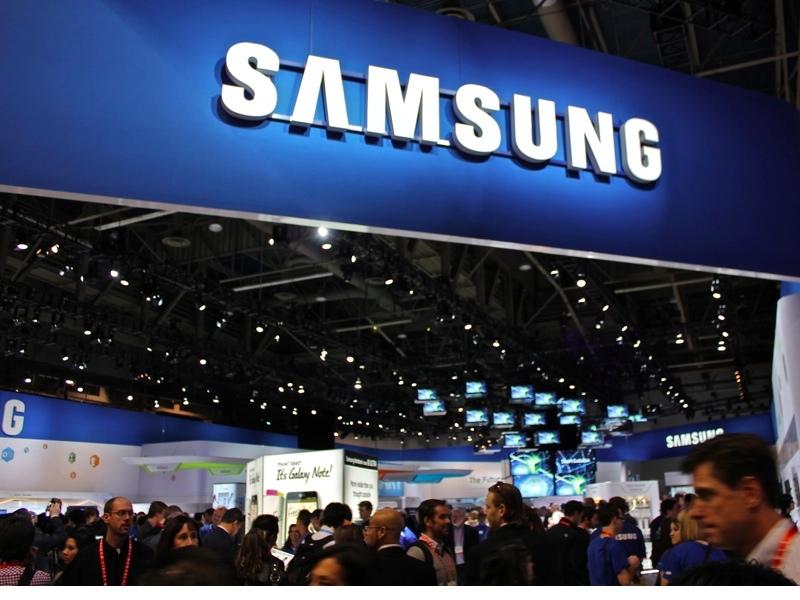
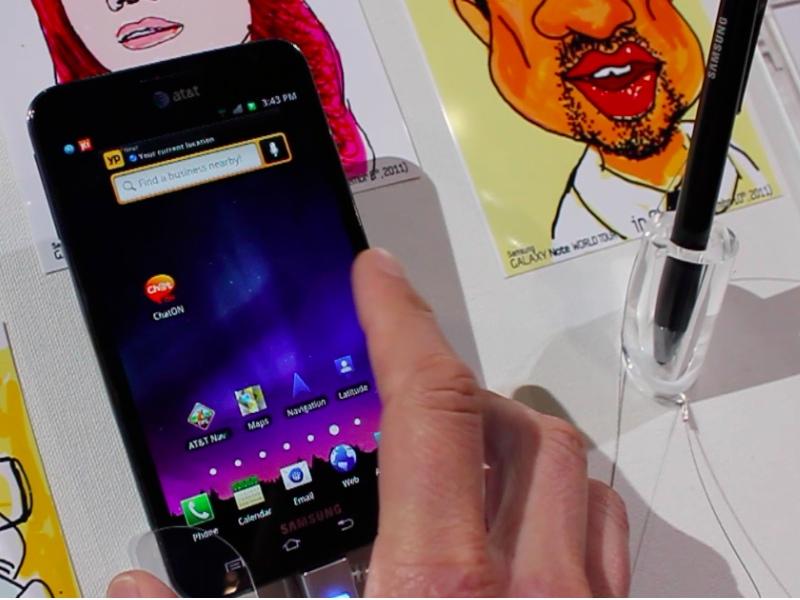
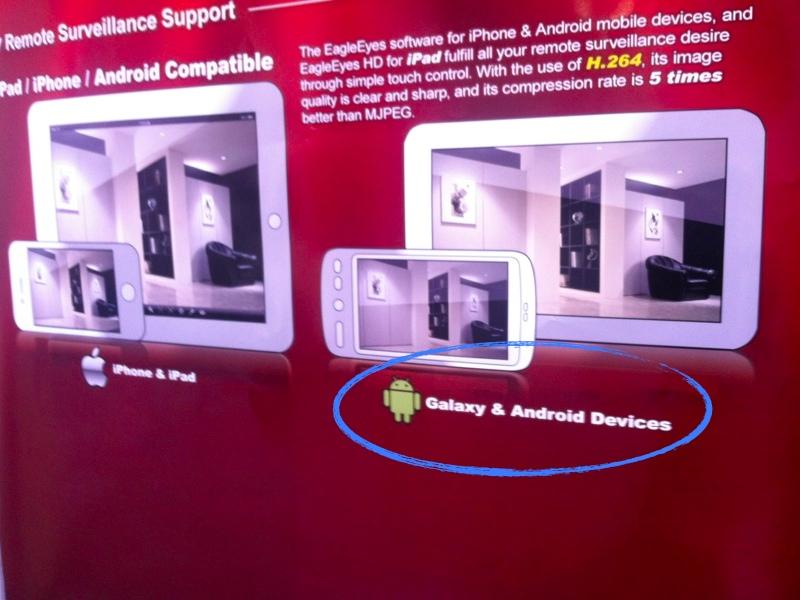
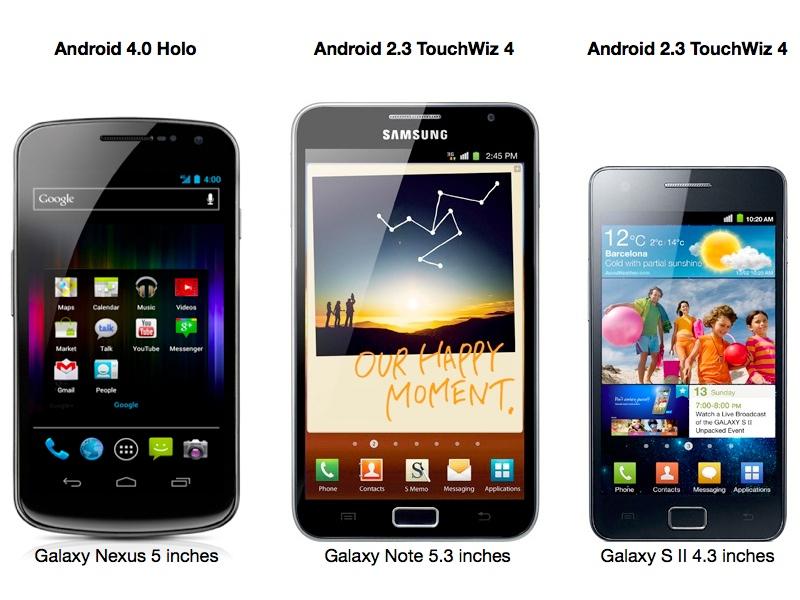
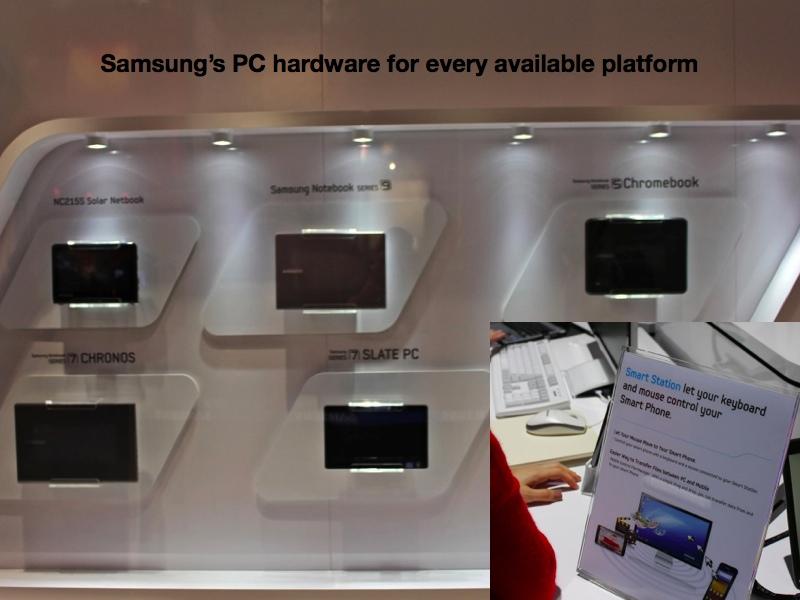
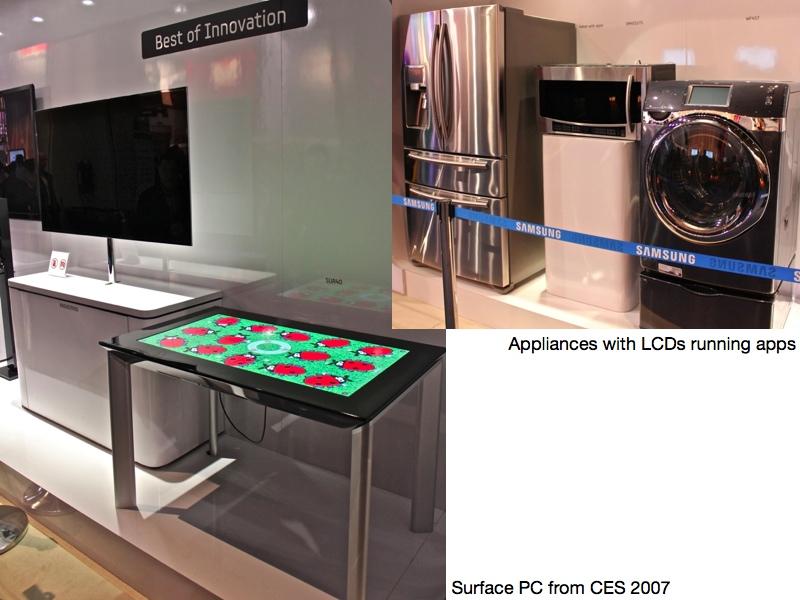
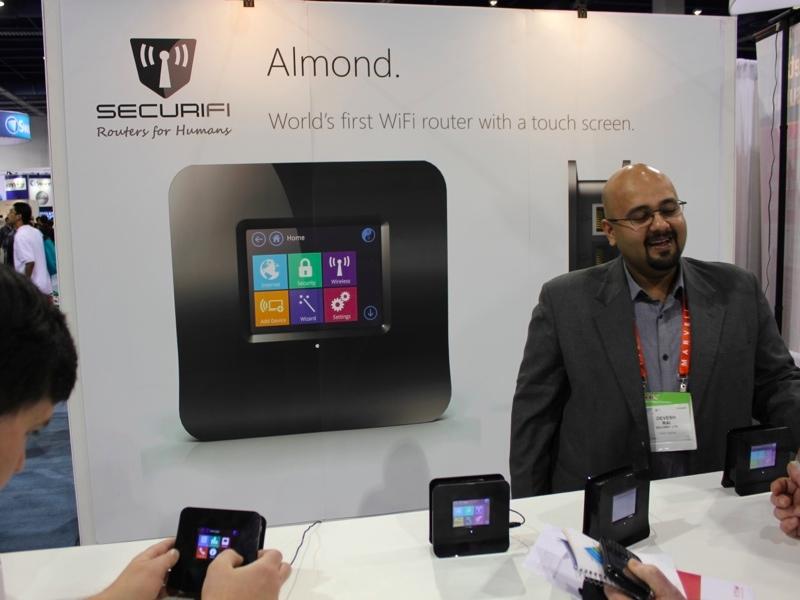

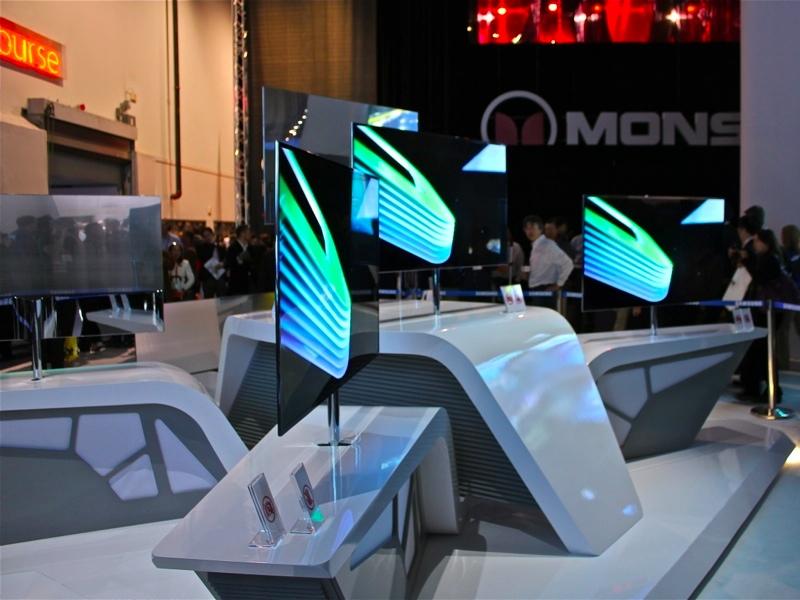
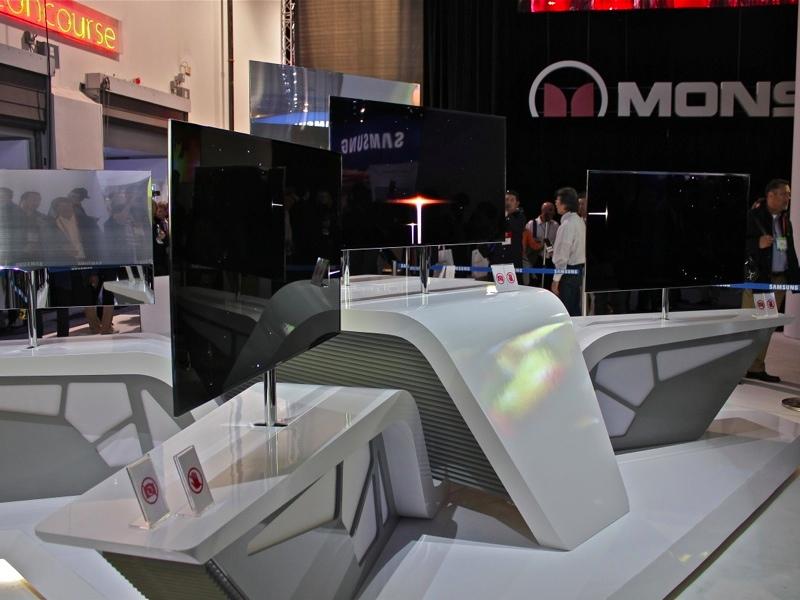














 Amber Neely
Amber Neely
 Thomas Sibilly
Thomas Sibilly
 AppleInsider Staff
AppleInsider Staff
 William Gallagher
William Gallagher
 Malcolm Owen
Malcolm Owen
 Christine McKee
Christine McKee










102 Comments
"the finger, best pointing device" .... that's it ...
Then you must not know Apple fans.
I've already heard some people say other wise.
"the finger, best pointing device" .... that's it ...
Tell that to an artist or people with actual jobs.
Ever try scribbling down notes with your fingers?
Drawing detailed diagrams with your fingers?
Pie chart and bar charts with your fingers?
Yes, that is what people in the work place do.
No, really.
Just give credit where its due (as much as people like your kind hate to do).
How is nobody realizing the complete and blatant error on the part of the author? I love Apple as much as the next, but don't make up stuff to try to make a point. Android 4.0 was not held from the Nexus S because of TouchWiz, it was held from their Galaxy S II models. I still think that's rediculous and horrible service to their paying customers, but the Nexus S, I believe, already got 4.0.
The Note is more than just Samsung proving that it can introduce a product that isn't a direct clone of an Apple product. It's also a declaration of independence from the freedom and openness of Google's Android.
I didn't realise this was already happening, just speculation that could happen.
Despite Samsung being put up against Apple, Apple has the least to worry about from Samsung. Samsung is hurting Google, is hurting MS, is hurting all other vendors using Android or Windows. They have blatantly stolen Apple designs but they're losing profit the way the others are and Apple will continue to maintain their control of the PMP, handset, tablet and PC markets. The only real option for Samsung is getting Bada to be as competent as Apple with quality HW to match, but that seems like a longterm plan for Samsung.
"the finger, best pointing device" .... that's it ...
I can't parse that.
Then you must not know Apple fans.
I've already heard some people say other wise.
No you haven't. Aping means imitating and Apple has no stylus in production.
+1 for an interesting discussion on Samsung-Google relations.
-1 for insinuating that Apple has anything to do with that.